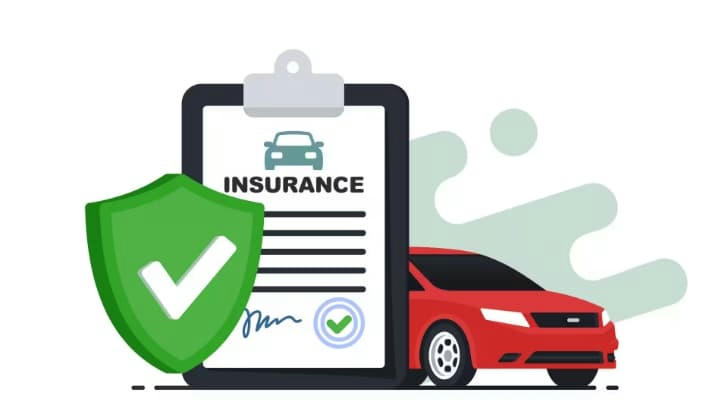A complete guide to car insurance: types, costs and how to choose the right one
Car insurance is an important protection that every car owner must understand and purchase. Most states require that a vehicle must purchase at least minimum car insurance before hitting the road to protect yourself and others from damage or losses in the event of an accident. This article will detail the types of car insurance in the United States, costs, influencing factors, and how to choose the right insurance plan.

🚗 1. Types of Car Insurance
✅ 1.1 Liability Insurance
• Mandatory requirements: The vast majority of states require car owners to purchase at least liability insurance.
• ✅ Coverage:
• Property Damage Liability: If you cause an accident, liability insurance will pay for the other party's vehicle or property repair costs.
• Bodily Injury Liability: Responsible for paying the other party's medical expenses, funeral expenses, and legal fees.
• Minimum coverage limits: Requirements vary by state, but common requirements are 25,000/50,000/25,000 (i.e., up to $25,000 per person, up to $50,000 total accident amount, and up to $25,000 property damage).
✅ 1.2 Collision Insurance
• Mandatory requirements: Usually not mandatory, but if you purchase or lease a vehicle with a loan, the lender may require it.
• Coverage: Collision insurance is responsible for paying for the repair costs of your own vehicle caused by an accident, regardless of whether you are at fault.
✅ 1.3 Comprehensive Insurance
• Mandatory requirements: Usually not mandatory, but the lender may require it.
• Coverage: Compensates for vehicle losses caused by non-collision accidents such as natural disasters, theft, fire, falling objects, or animal strikes.
✅ 1.4 Uninsured/Underinsured Motorist Coverage
• Mandatory: Some states require it.
• Coverage: If the other party in the accident is uninsured or underinsured, your policy will cover your medical expenses and property damage.
✅ 1.5 Medical Payments Coverage (MedPay)
• Mandatory requirements: Usually not mandatory, but required in some states.
• Coverage: Covers your medical expenses regardless of who is at fault for the accident.
✅ 1.6 Personal Injury Protection (PIP)
• Mandatory requirements: Required in "No-Fault States".
• Coverage: Includes medical expenses, rehabilitation expenses, funeral expenses, and loss of work time due to injuries.
💰 2. Car Insurance Costs (Average Premiums)
The cost of car insurance varies by state, driving record, age, gender, vehicle type, and other factors.
| State | Average Annual Cost (USD) | Notes |
|---|---|---|
| California | About $1,980 | High traffic volume and high accident rate |
| Texas | About $1,820 | Many interstate highways, climate impact |
| New York State | About $2,400 | The city has complex traffic and a high theft rate |
| Florida | About $2,100 | Impact of hurricanes and natural disasters |
| North Dakota | About $1,280 | Low traffic density and low accident rate |
National average annual premium: About $1,600 (2024 data)

🌟 3. Factors Affecting Car Insurance Rates
The following factors may affect your car insurance costs:
• ✔️ Driving record: Accidents, speeding, and violation records will increase your premiums
• ✔️ Age: If you are younger than 25 or older than 65, the premium will be higher.
• ✔️ Credit score: In some states, a low credit score will lead to an increase in premiums.
• ✔️ Vehicle type: High-performance cars, luxury cars, or new cars usually have higher premiums.
• ✔️ Where you live: Cities with heavy traffic or high crime rates have higher premiums.
• ✔️ Mileage: The higher the annual mileage, the higher the premium.
• ✔️ Gender and marital status: Young men and unmarried people generally have higher premiums.
🛠️ 4. How to Choose the Right Car Insurance
When choosing car insurance, you can follow these steps:
• Assess your needs: Decide on insurance coverage based on vehicle type, driving frequency, and financial situation.
• Compare quotes: Get quotes from different insurance companies through insurance comparison platforms such as Insurify or NerdWallet.
• Check discounts: Many insurance companies offer discounts for the following situations.
• Discounts for vehicle safety equipment
• Discounts for safe driving records
• Discounts for automatic payments or full payments
• Choose a suitable deductible: The higher the deductible, the lower the monthly premium, but the out-of-pocket expenses will increase after an accident.

🚀 6. Conclusion
The car insurance system is complex but flexible, and you can choose the right plan based on your personal needs and budget. By comparing quotes and discounts from different insurance companies, combined with your own driving habits and vehicle conditions, you can reduce your premiums and get comprehensive protection.
